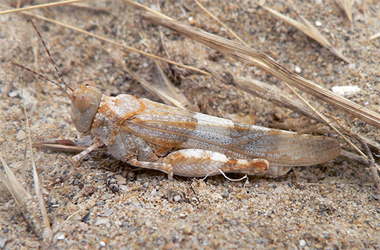Melanins are biological pigments that occur in two chemical forms, eumelanin and pheomelanin. In vertebrates, melanin synthesis normally takes place in epidermal melanocytes using dihydroxyphenylalanine as a precursor, but in human catecholaminergic neurons the precursor is dopamine and leads to neuromelanin. Here authors report for the first time that an insect (grasshopper) synthesizes pheomelanin. It does so using dopamine as the main precursor, thus producing a pigment homologous to the pheomelanic moiety of human neuromelanin. The production of this moiety involves neurotoxic intermediates that have been linked to Parkinson's disease. informacion[at]ebd.csic.es: Galván et al (2015) Insects synthesize pheomelanin. Pigment Cell Melanoma Res DOI: 10.1111/pcmr.12397


 Las altas temperaturas están provocando que las lagunas y las marismas de Doñana pierdan agua rápidamente
Las altas temperaturas están provocando que las lagunas y las marismas de Doñana pierdan agua rápidamente




